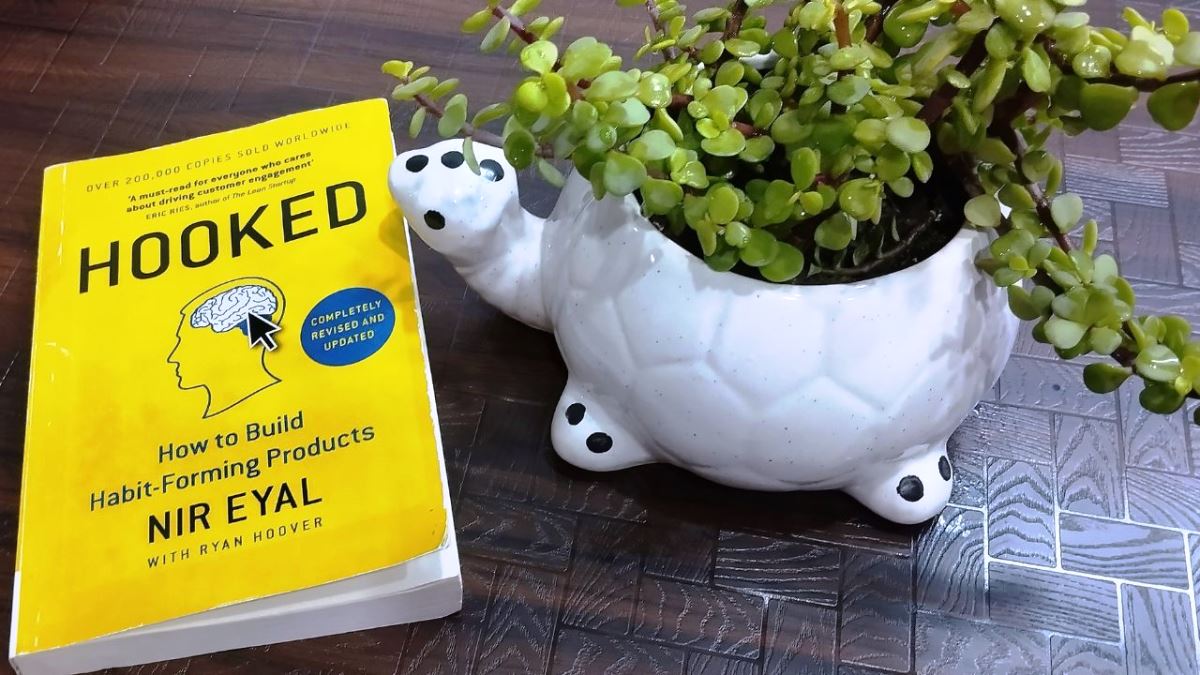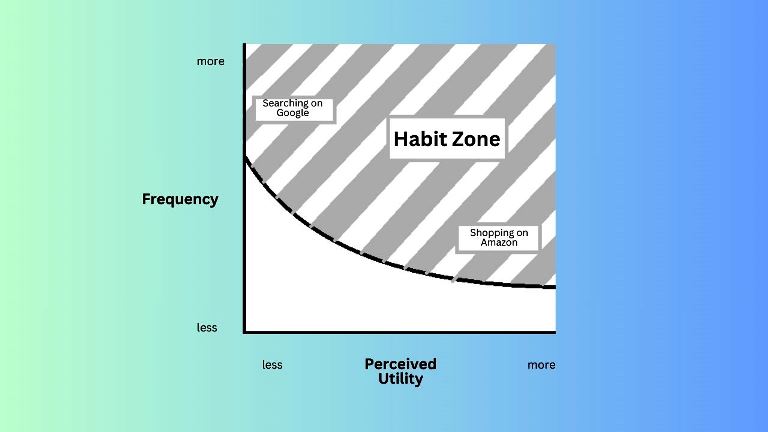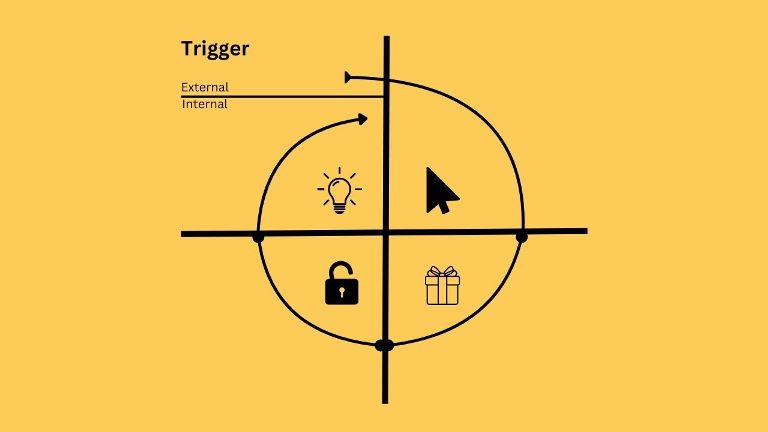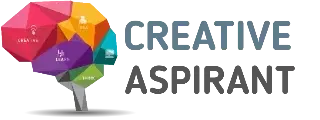When you search for products online, you will see them repeatedly as advertisements. Finally, you will be willing to purchase them.
But WHY did this happen?
The Hook Model explains user habits, which consist of four looping cycles: trigger, action, variable reward, and investment. It also draws attention to products and takes advantage of customer habits.
It is an excellent book that explains the user’s behavior towards technological products and services.

- Chapter 1: The Habit Zone
- Vitamin Versus Painkillers
- Chapter 2: Trigger
- External Triggers
- Internal Triggers
- Chapter 3: Action
- Action Vs. Inaction
- What Motivates People?
- What are the factors that influence people’s abilities?
- Chapter 4: Variable Rewards
- Rewards Of The Tribe, The Hunt, And The Self
- Chapter 5: Investment
- Chapter 6: What Are You Going To Do This?
- Chapter 7: Case Studies
- Chapter 8: Habit Testing And Where To Look For Habit-Forming Opportunities
- Takeaway
Chapter 1: The Habit Zone
Our brains are remarkably efficient machines. To streamline everyday actions, they develop habits – automatic behaviors ingrained in our neural pathways. This frees up mental resources so we can focus on more complex tasks.
Nail-biting is a classic example. Perhaps it began as a childhood response to stress or boredom. Over time, the brain forged a link: stress/boredom ➔ nail-biting ➔ temporary relief. Each time this cycle happens, the connection strengthens, making it harder to break.
Like nail-biting, many of our daily decisions slip into this automatic mode. The brain thinks if something worked yesterday, it might work again today. Soon, everything from your morning coffee routine to your evening social media scroll becomes a deeply ingrained routine
Do you know why habits are good for business?
If our programmed behavior is so influential in guiding our everyday actions, harnessing the same power of habits can surely benefit the industry.
Habit-forming products change user behavior and create unprompted user engagement.
For example, as of December 2013, more than 500 million people had downloaded Candy Crush Saga, a game played mostly on mobile devices. The game’s “freemium” model converts some of those users into paying customers, netting the game’s maker nearly $1 million per day.
It is a standard practice by game and entertainment services first to make us addicts and then, after habit-forming, start charging for the same.
Habit formation is good for business in several ways.
- …It creates customer loyalty and retention.
- …It helps predict consumer behavior.
- …It increases the lifetime value of a customer.
Learn the 80/20 Principle and How to Use It to Become Happy and Blessed.
Vitamin Versus Painkillers
Eyal argues that there are two main types of products: those that provide ongoing benefits (vitamins) and those that solve immediate problems (painkillers). Consumers often gravitate towards painkillers because they provide immediate and noticeable relief.
However, Eyal suggests that companies should also focus on offering “vitamin” products that build long-term value and habits with their customers.
In the early stages, companies can introduce these vitamin products to establish routines and build brand loyalty, paving the way for future success. Later, the consumer uses it as a painkiller to ease his pain.
For example, all social media platforms use this technique only.
- First, they engage their customers in watching or scrolling their screens and taking it as a vitamin.
- Later, when the customer falls into their trap, they make the customer scroll on their screens to release dopamine (the happy hormone) and forget about their pain.
In this way, they are growing the company by taking advantage of customer habits.

Chapter 2: Trigger
Habits are not created; they are built upon.
Habits are like pearls. When an irritant gets into an oyster, it creates a layer of nacre over it to prevent itching. In that way, triggers create habits because triggers are their basic. There are two types of triggers: external and internal.
External Triggers
Habit-forming technologies start changing behavior by first cueing users with a call to action. External triggers tell the user what to do next by placing information within the user’s environment.
For example, when we see a Coca-Cola vending machine, we are tempted to quench our thirst with Coca-Cola instead of water.
There are four types of external Triggers.
Paid Triggers
Advertising, search engine marketing, and other paid channels are commonly used to get users’ attention and prompt them to act. Paid triggers can be effective but costly ways to keep users coming back.
Earned Triggers
Earned triggers are free in that they cannot be bought directly but often require investment in the form of time spent on public and media relations.
Relationship Triggers
Telling others about a product or service can be a highly effective external trigger. For example, PayPal had viral success in the late 1990s. The people who signed up for this service to send money to their relatives and friends realized the significance of success once they started using it.
Owned Triggers
Owned triggers prompt repeat engagement until a habit is formed, while paid, earned, and relationship triggers drive new user acquisition. Yet, external triggers are only the first step.
Internal Triggers
Internal triggers tell the user what to do next through an association stored in the user’s memory. Negative emotions frequently serve as internal triggers.
Which internal trigger do we experience most frequently?
The answer is Instagram,TIK TOK, and Facebook. Many times, we use our phones for important work like checking mail or doing other important work, but when we exit that work, we see the icons of Facebook, Instagram, and many other social media apps.
We get into the trap and unknowingly waste our precious time in that, and gradually, it becomes a user’s habit.
Like many social networking sites, Instragam also alleviates the increasingly recognizable pain point, fears of missing out, or FOMO.
Emotions, particularly negative ones, are powerful internal triggers and greatly influence our daily routines.

Chapter 3: Action
The next step in the hooked Model is the action phase. As discussed earlier, internal and external cues drive triggers and what to do next. However, the trigger is useless if the user does not take action.
Action Vs. Inaction
Action is the most important factor in habit formation.
How can a product designer influence users to act? Is there any formula for behavior?
Fogg suggests that there are three ingredients required to initiate any behavior.
- The user must have sufficient motivation.
- The user must have the ability to perform the desired action.
- A trigger to make the behavior happen.
If any component of this formula is absent or insufficient, the user will not cross the “Action Line,” and the behavior will not occur.
Let us now dive deeper into the other two components of the Fogg Behavior Model: Motivation and Ability.
What Motivates People?
Three Core Motivators drive behavior in most humans.
- Humans are motivated to seek pleasure and avoid pain,
- Seeking hope and avoiding fear.
- Seeking social acceptance while avoiding social rejection.
What are the factors that influence people’s abilities?
People should first understand why they use a product or service. Then, they should lay out the customer’s steps to get the job done. Finally, once they understand the series of tasks from intention to outcome, they should start removing steps until they reach the simplest possible process.
Six elements of simplicity: the factor that influences a task’s difficulty. These are.
- Time
- money
- Physical effort
- Brain Cycles
- Social deviance
- Non-routine
Heuristics are a set of cognitive shortcuts we take to make quick decisions. Product designers can use many tricks to make their ideas more likely to happen.
Chapter 4: Variable Rewards
The third step in the Hooked Model is the variable rewards phase, in which you reward your users by solving a problem, reinforcing their motivation for the action taken in the previous phase. To understand this, you need to go deep inside the brain. Actually, we now know that other things that make us feel good also use the same part of our brain.
Delicious food, a bargain, and even our digital devices all tap into this deep part of the brain, which is why many of our behaviors happen.
Rewards Of The Tribe, The Hunt, And The Self
We are a species that depends on one another. The tribe’s rewards, or social rewards, are driven by our connectedness with other people.
Our brains are adapted to seek rewards that make us feel accepted, attractive, important, and included.
Rewards Of Tribe
The rewards of the tribe are the search for material resources and information. Here are some online examples of the rewards of the tribe :
- Facebook: Facebook offers numerous examples of variable social rewards. You can see many things when you log in, like what your friends have shared or commented on. You can also see how many people like something.
- Stack Overflow: It is the world’s largest question-and-answer site for software developers.
- League of Legends: A popular computer game launched in 2009 and quickly achieved tremendous success.
Rewards Of Hunt
The reward of the hunt is the search for material resources and information. Here are a few examples of products that create habits by leveraging the rewards of the Hunt:
- Machine Gambling: Most people know that gambling benefits the casino or broker far more than the players. As the adage says,” The house always wins”.
- Twitter: The steam of limitless information displayed in a scrolling interface makes for a compelling reward of the Hunt.
- Pinterest: A company that has experienced exponential growth, achieving over 25 million monthly users worldwide.
Rewards Of The Self
Rewards of the self are the search for intrinsic rewards of mastery, competence, and completion. The experience below offers examples of variable rewards of the self.
- Video Games: Rewards are a defining component of video games, as players seek to master the skills needed to pursue their quest.
- E-mail: The humble email system shows how the search for mastery leads to habitual and sometimes mindless actions.
- Codecademy: Learning to program is not easy. Codecademy seeks to make writing code more fun and rewarding.
Want To Know How To Get Blessed With Money And Happiness? Read This. The Richest Man In Babylon Book Summary
Chapter 5: Investment
The investment phase is the fourth step in the Hooked Model. It is said that the frequency of new behavior forms a new habit. The second important factor is the participant’s attitude.
The Behaviors that you want to make routine should be frequently exhibited. We can change our perception of turning unfamiliar actions into habits with a small investment.
Let’s look at the first way: we irrationally value our efforts. For example, in the U.S., students were asked to make origami cranes and frogs. After making them, they were again asked to auction them, selling their origami for between 1 dollar and 100 dollars. Another group of students was asked to bid on origami using the same processes, and the third group was asked to bid on expert-made origami using the same criteria.
Later, the result indicated that the group that made their own origami priced their items five times higher than the second and third groups. This proves that people value their labor.
- The investment comes after the variable reward phase, when users are primed to reciprocate.
- Investment increases the likelihood of users returning to the service the more it is used. It enables the actualization of stored value in the form of content, data, followers, reputation, or skill.
READ It To Find True Happiness And Purpose of Life: Ikigai Book Summary (With Pdf)
Chapter 6: What Are You Going To Do This?
It’s helpful to figure out which category your work fits into. This will help you decide if it’s okay to manipulate users as a designer of habit-forming technology.
Are you a facilitator, peddler, entertainer, or dealer?
So, let’s understand the difference between the four.
- Facilitators use their product and believe it can materially improve lives. They have the highest chance of success because they closely understand users’ needs. To take liberties with Mahatma Gandhi’s famous quote: Facilitators “build the change they want to see in the world.”
- Peddlers believe that their product can significantly improve people’s lives, but they do not use it themselves, for example, advertising. They must know the hubris and inauthenticity of building solutions for people they do not understand firsthand.
- Entertainers use their products but do not believe they can improve people’s lives. They can be successful, but without improving the lives of others.
- Dealers neither use the product nor believe it can improve people’s lives. They have the lowest chance of finding long-term success and are in morally precarious positions, for example, in casinos and drug dealers.

Chapter 7: Case Studies
The Hooked Model is a famous work based on human psychology and the close examination of today’s most successful habit-forming products. Let’s study how it all comes together in one of the world’s most popular apps, THE BIBLE APP.
Bobby Gruenewald, the CEO, is a quick thinker and a fast-talking man.
Gruenewald acknowledges that his Bible app was among the first to be released on Apple’s App Store in 2008. Earlier, it was a desktop website, But he quickly converted his website into a mobile app and optimized its reading.
Gruenewald needed to get users hooked quickly if he wanted his website to reign supreme. Some strategies helped him achieve success.
- The mobile interface increases accessibility and usage by providing frequent triggers.
- The Bible app increases user’s ability to act by front-loading interesting content.
- It also provides an alternative audio version. By separating the Bible into smaller chunks, users can find it earlier to read daily.
- Every annotation, bookmark, and highlight stores data in the app, making users even more committed.
Chapter 8: Habit Testing And Where To Look For Habit-Forming Opportunities
It is important to filter out bad ideas with low habit potential and establish a framework for identifying room for improvement in existing products.
It helps the product designer generate a prototype for a habit-forming technology and uncover potential weaknesses in an existing product’s habit-forming potential.
Once the product is built, habit testing uncovers product devotees, which product elements (if any) are habit-forming, and why that aspect of your product changes user behavior. Habit Testing includes three steps: identify, codify, and modify.
- First, dig into the data to identify how people use the product.
- Second, these findings should be codified when searching for habitual users. To generate new hypotheses, study the actions and paths taken by devoted users.
- Third, modify the product to influence more users to follow the same path as your habitual users. Then, evaluate the results and continue to modify as needed.
Takeaway
Habits are behaviors that occur without conscious thought or intention.
Here, we learned how businesses that create customer habits gain a significant competitive advantage.
How negative emotions frequently serve as internal triggers.
